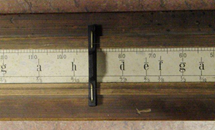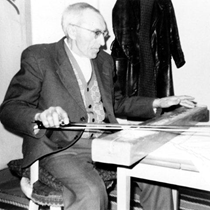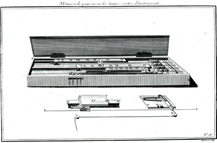The monochord, as the name suggests, is an instrument with a single string, which is stretched over a resonating box. It has its roots in antiquity, when the mathematical relationships between the intervals were discovered using a movable bridge that could be placed in different positions on the string.
In our time the monochord has been used as an instrument of physics/acoustics to explore and demonstrate the properties of intervals. For example, the Swedish Academy of Sciences had a monochord made here around 1750, which they used in their acoustic experiments. It was the time when sound was explored physically and calculated on non-uniform and uniform temperaments. A closely related area of use was the function of a tuning aid, for which we have electronic apparatus today.
A late variant of the monochord that became widespread is the “psalmodicon”, which is played with a bow. It was “invented” by the priest Johannes Dillner (1785-1862) to “improve congregational singing”. With a numeric notation, everyone could learn the hymns and sing along in church.

Monochord Frans Svanström & Co. (KH 329)

Monochord (detail) (KH 329)

